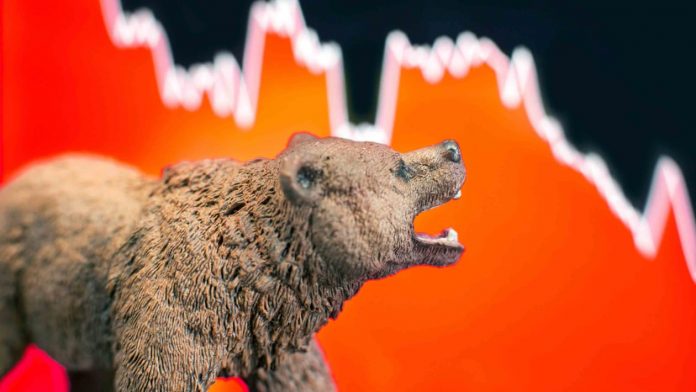Getty Images
After months of surging inflation, the S&P 500 finally broke down into bear-market territory, ending a two-year-plus COVID recovery bull run.
The catalyst, of course, was Friday's surprising revelation that consumer prices soared by 8.6% in March – a report so toxic that Wall Street was still digesting it today.
"The hot inflation report provided a double dose of bad news for the economy and for stocks," says Paul Christopher, Head of Global Market Strategy for the Wells Fargo Investment Institute. "First, it added to the pressure on households' real (inflation-adjusted) income, and second, it stoked the debate over more aggressive rate increases by the Fed beyond the two half-percentage-point hikes expected next week and at the late July policy meeting. … Interest rate futures contracts are now pricing in a third half-percentage-point rate increase at the policy meeting on Sept. 20-21."
And in fact, some experts warned that the Fed might yank even harder on the reins at this week's Federal Open Market Committee (FOMC) meeting.
Sign up for Kiplinger's FREE Investing Weekly e-letter for stock, ETF and mutual fund recommendations, and other investing advice.
"With cost pressures showing no signs of easing, a 75-bp move cannot be ruled out at this week's FOMC meeting," says Priscilla Thiagamoorthy, economist at BMO Capital Markets.
Bond traders seemed to think that was a distinct possibility, as the 10-year Treasury sold off hard Monday. That sent its yield as high as 3.35% (remember: bond prices and yields move in opposite directions), surpassing a 2018 peak to reach its highest rate since 2011.
Moreover, the yield on the two-year Treasury briefly surpassed the 10-year – a "yield curve inversion" that frequently signals an impending recession.
The S&P 500 plunged 3.9% to 3,749 – a 21.8% decline from its Jan. 3 closing high of 4,796, ending the bull market that started March 23, 2020. The Nasdaq Composite (-4.7% to 10,809) retreated even further into bear-market territory, and the Dow Jones Industrial Average (-2.8% to 30,516) would need to drop another 4.0% to join its fellow indexes.
YCharts
Other news in the stock market today:
Some investors are assuredly stuck in strategic purgatory. Do you feast on this dip, expecting stocks to violently snap back like they did in spring 2020 and the first quarter of 2019? Or do you wait for the market to further price in an expected litany of interest-rate hikes and the possibility of continued high inflation?
Wall Street is hardly sure. For instance, Chris Larkin, managing director of trading for E*Trade, says that "investors shouldn't be too discouraged … over the past six decades, by the time the SPX officially entered bear territory, the selling was usually closer to its end than its beginning." However, the BlackRock Investment Institute says "we pass" on buying this dip, as "a higher path of policy rates justifies lower equity prices."
But if your instincts lean toward protecting your backside, you can find all the tools you need in your brokerage account. We recently highlighted 10 highly rated defensive stocks that should hold up well in a bear market, and today, for those that want to add some diversification to their hedges, we're exploring a dozen of the best bear-market exchange-traded funds (ETFs).
These funds run the gamut, from simple protective stock portfolios to exotic bond-market options, all with the hope of losing less than the market – or, ideally, recording some black ink. Check them out:
Kiplinger is part of Future plc, an international media group and leading digital publisher. Visit our corporate site www.futureplc.com
© Future US LLC, 10th floor, 1100 13th Street NW, Washington, DC 20005. All rights reserved.






